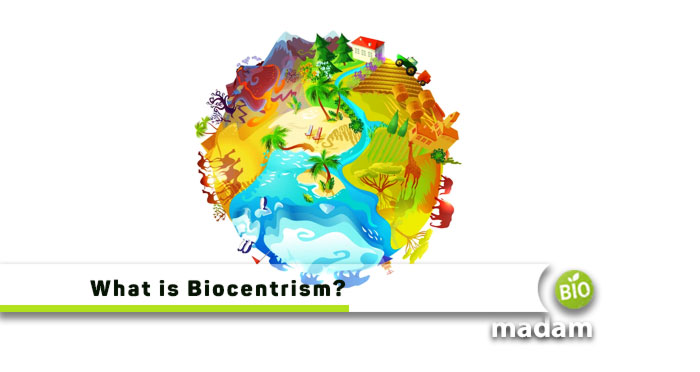The twenty-first century has been called the century of biology compared to previous times that focused more on physics. Researchers have been working on life and the elements that influence life. The biocentrism theory has also risen from the consistent efforts to explain the universe from a biological perspective.
Biocentrism is a product of research on universal aspects combining physics and biology. It does not separate the two domains but talks about them collectively. The main idea of biocentrism is the universe did not give rise to life; instead, it is the other way around. Scientists who believe in biocentrism say that the universe exists because of living organisms.
It can be a little complicated to understand, yet this article explains all the tidbits of biocentrism in detail. Let’s tell you everything about it quickly!
History of Biocentrism
While all the recent buzz about biocentrism is attributed to Robert Lanza, he was not the first to use this term. The environmental ethicist, Holmes Rolston III, coined “Biocentrism” in the 1970s. However, there was not much information on the concept until Lanza mentioned it in his book.
Robert Lanza, an American doctor and scientist, was walking through the forest when he saw a golden orb web spider tied to the overhead boughs. The spider was trapped in the web and was trying to figure out a way to escape by detecting the vibrations of the web. However, everything beyond the web seemed like a faraway part of the universe to the spider.
Thus, Lanza thought we are also part of a magnificent web of time and space based on our consciousness. Would the web have existed without the spider? So, does the universe also exist because we exist? Would it still be still there if organisms and microorganisms were not a part of the universe?
Lanza introduced Biocentrism in his book “Understanding the Universe’s True Nature Through Life and Consciousness.” The mention of this theory in the book led to scientists thinking about everything discovered previously. Some believe this is possible; others think biocentrism claims do not make sense, whereas a few added their findings to Lanza’s concept. Arne Naess promoted the idea of different types of ecology, whereas Aldo Leopold introduced the land ethic.
What is Biocentrism Theory?
The word ‘biocentrism’ combines the Greek words ‘bios,’ meaning life, and ‘kentron,’ translating to center.
The main idea of biocentrism is that our consciousness shapes the universe and not the other way around. Scientists over centuries have been wondering about the formation of the universe, and there has been no significant progress in the domain except for the Big Bang. However, researchers believe that the Big Bang is not the answer to the existence of life. Instead, it is just one event in a series of events that gave rise to the world eventually.
Biocentrism is a nature-based approach instead of human or universe-based. It believes that nature is the fundamental part of the universe, and nothing would have existed if it was not for living organisms; this concept also takes away the limelight from humans, mentioning that all organisms are equal.

Claims of Biocentrism Theory
The biocentrism theory makes a few claims regarding biological and physical concepts. Here’s what biocentrism says:
Consciousness Creates the Universe
Opposed to previous claims that life and nature were created for the universe, Lanza proposed a thought that our consciousness creates the universe. The absence of specific information regarding consciousness rising from the universe makes people think Lanza’s claim might be correct.
Life is Infinite
Robert Lanza’s biocentrism theory also promotes the concept of rebirth, as he believes that life and death are not finite. He mentions that the life cycle is a continuous phenomenon instead of a linear one. So, the process continues and repeats between birth, death, rebirth, and evolution.
Humans are not Superior
Biocentrism also negates anthropocentrism and believes that all living organisms are equal. Lanza states humans are in no way superior to other living organisms.
Living Organisms are Interconnected
Another aspect of the theory includes the interconnection between living organisms and how one influences the other. For example, the changes in the population of one community in the ecosystem directly or indirectly impacts the existence of another.
Time is not Absolute
The mention of time’s property by Robert Lanza is another interesting aspect of biocentrism. He mentions that time is not an absolute entity. It is relative and linear, and events occur in different realities at the same time.
Counter Arguments
While Lanza has put together quite a detailed explanation of why he believes in biocentrism, some scientists came up with counter arguments to prove biocentrism debunking. Some of the critiques and counter arguments against biocentrism include:
Lack of Evidence
As Lanza talks about consciousness and time, he fails to provide evidence for these characteristics. Thus, a lack of evidence to prove biocentrism weakens Lanza’s claims.
Inability to Test
Besides the absence of evidence, the elements mentioned in biocentrism cannot be measured on the testing criteria used to test theories relating to physics or biology. It makes scientists skeptical about agreeing with Lanza’s views without provable results.

More Philosophical than Scientific
Some researchers also believe that biocentrism is more of a philosophical theory than a scientific one, so there are no metrics to prove it. Lanza talks about rebirth, time, and consciousness; measurable parameters cannot prove these concepts.
Opposes Modern Physics
Scientists have spent their lives discovering the physical aspects of the world around us; they have given revolutionary insights and studies like laws of thermodynamics, gravity, the theory of relativity, and others. Opposed to Lanza’s theory, physics considers the universe a physical and measurable entity.
Biocentrism and Advancing Technology
Biocentrism and advancing technology, especially those involving living organisms, do not go together. While biocentrism encourages us to value living things as they are the center of the existence of the universe, modern technology is pushing limits to create something extraordinary.
Considering the claims of biocentrism, it influences many technological advancements around us, especially in genetic engineering and biotechnology. Understanding biocentrism and using it in a way that does not step over claims by other scientists can help us work in a better direction.
The Bottom Line
Biocentrism is the combination of bio and centrism, indicating that life is the center of the universe. Robert Lanza shared the concept of biocentrism in his book “Understanding the Universe’s True Nature Through Life and Consciousness.” He mentions that our consciousness shapes the universe, time is absolute, life is infinite, and living organisms are interconnected. He also negates anthropocentrism and says that all organisms are equal. However, Lanza’s claims are not testable yet and provide no particular evidence, leaving ambiguity among researchers. They also contradict other existing theories of physics, making it difficult to believe them.
FAQs
What are the criticisms of biocentrism?
Critiques of biocentrism think of the universe as a physical and measurable entity and do not think our consciousness shapes it. At the same time, they also believe that humans can’t survive without killing other organisms, and thus humans are superior. Furthermore, the absence of measurable results of Lanza’s claims makes it hard to accept biocentrism.
How does biocentrism explain death?
The theory of biocentrism explains death in a beautiful way. It says that life is infinite, meaning that death only transports your consciousness into another world. In simple words, it can be explained as rebirth. Lanza mentions that life is an infinite cycle from life to death, rebirth, and evolution.
What are 3 examples of biocentrism?
As biocentrism says all organisms are equal, it promotes an environmentalist approach. If we accept biocentrism, the world will experience a major shift, avoiding the intake of animals, stopping animal testing, and opposing the use of fur.
What is left biocentrism?
Left biocentrism is anti-industrial and anti-capitalist but not necessarily socialist. It means that left biocentrism encourages social justice while realizing that ecology is primary.

Jeannie has achieved her Master’s degree in science and technology and is further pursuing a Ph.D. She desires to provide you the validated knowledge about science, technology, and the environment through writing articles.

